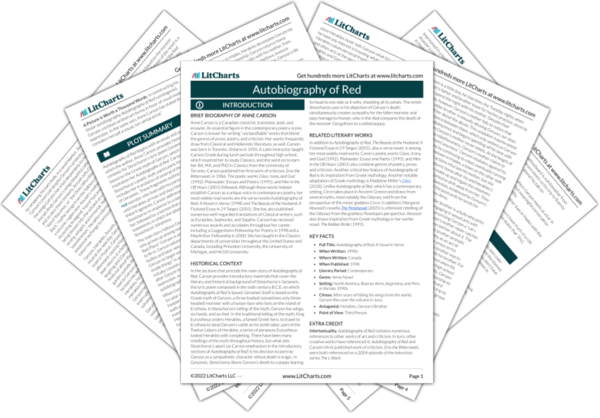In
Geryoneis, Stesichoros breaks from tradition by presenting Geryon’s story to challenge “conventional” tellings of the myth, which typically offer a morality tale that celebrates “culture over monstrosity.” Stesichoros challenges this version of reality by proposing a version of the story that portrays Geryon, the myth’s monster, in a sympathetic light. Stesichoros complicates the story rather than essentializing it. Whereas earlier tellings in the Homeric tradition ask the reader to believe that Herakles is essentially good and Geryon is essentially bad, Stesichoros leaves room for mystery and interpretation.
